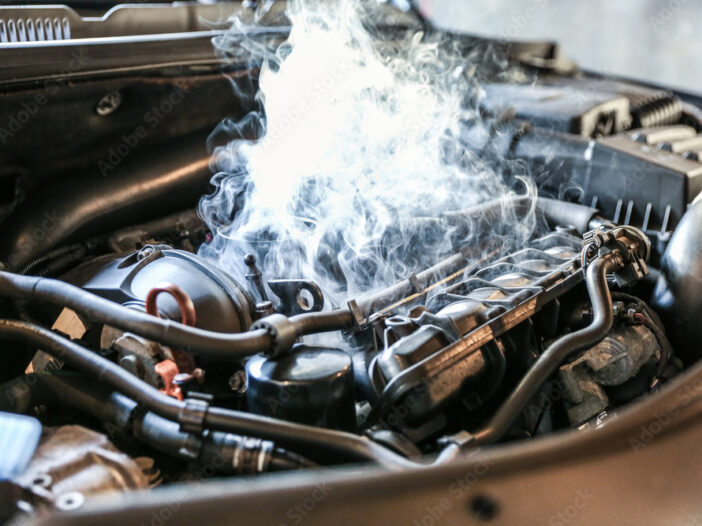
Every car owner knows the importance of keeping their vehicle in top shape, but the cooling system often gets overlooked until it’s too late. Understanding the signs of issues in the cooling system saves you from inconvenient breakdowns and expensive repairs. Discover how to detect issues in your vehicle’s cooling system, prevent them, and ensure your rides are smooth and safe.
Table of Contents
An Overheating Car
Overheating in your car is similar to a high fever; it’s a definitive signal of a compromised cooling system. This condition stems from various issues, such as a low coolant level, a leak in the system, a failed water pump, or a clogged radiator.
Ignoring this warning sign leads to significant engine damage, including cracked engine blocks or warped cylinder heads, which are prohibitively expensive to repair. Address overheating immediately by turning off the engine and seeking professional help to diagnose the cause and fix the issue. Adhering to regular maintenance is also a must, especially in turbocharged vehicles. Preventing your turbocharger from overheating is essential to your vehicle’s performance.
Coolant Leaks
Coolant leaks are among the most common issues with a vehicle’s cooling system; they indicate that something may be amiss. These leaks manifest themselves in various ways, from obvious puddles of coolant under your car to subtle signs like a consistently low coolant level without an apparent source of leak.
Coolant can leak from several places, including the radiator, hoses, water pump, and engine. Ignoring these leaks leads to a significant loss of coolant over time, compromising the cooling system’s efficiency and potentially causing your engine to overheat. Regular checks under the hood and underneath the vehicle help you spot leaks, allow you to make timely repairs, and avoid more severe damage to the cooling system and engine.
Steaming Engine
A steaming engine is a dramatic and immediate sign that your vehicle’s cooling system is failing. When you see steam emanating from under the hood, it means the cooling system cannot dissipate heat from the engine, causing the coolant to boil and produce steam. This situation is usually the result of an extreme overheating episode and indicates a severe problem that needs immediate attention.
Continuing to drive with your vehicle in this condition may cause catastrophic engine damage. If your car begins to steam, turn off the engine and seek professional assistance to avoid further damage to your vehicle.
The Heater Is Blowing Cold Air
Another subtle yet telling sign of a problem within your vehicle’s cooling system is when the car starts blowing cold air when you set the temperature high. These contradicting actions and temperatures often occur when coolant flows through the heater core to warm it up. Generally, this symptom points to a low coolant level caused by various issues in the cooling system, such as leaks or a malfunctioning radiator cap. When your car heater keeps blowing cold air, refill the coolant or inspect the heater core for damage. The health of your vehicle’s cooling system is paramount for ensuring the longevity and reliability of your car. Watch for these signs and issues in your vehicle’s cooling system to prevent them from escalating. Address these symptoms by seeking the help of a professional mechanic.